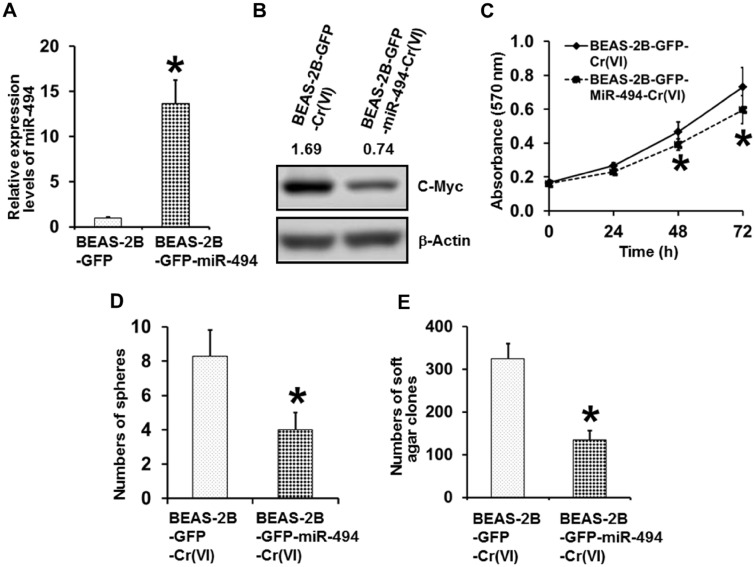Figure 5.
Stably overexpressing miR-494 in parental BEAS-2B cells significantly reduces chronic Cr(VI) exposure inducing CSC-like property and cell transformation. A, Q-PCR analysis of the relative expression levels of miR-494 in parental BEAS-2B GFP vector control [BEAS-2B-GFP] cells or GFP-miR-494 stable overexpression [BEAS-2B-GFP-miR-494] cells. The miR-494 level in miR-494 stable overexpression cells was expressed relative to GFP vector control cells (mean ± standard deviations, n = 3). *p < .05, compared with the GFP vector control cells. B, Western blot analysis of c-Myc expression level in chronic low dose Cr(VI)-exposed GFP vector control and GFP-miR-494 stable overexpression cells. After exposure to 0.25 µM of Cr(VI) (K2Cr2O7) for 20 weeks, GFP vector control [BEAS-2B-GFP-Cr(VI)] and miR-494 stable overexpression cells [BEAS-2B-GFP-miR-494-Cr(VI)] were harvested for Western blot analysis. C, MTT analysis of the growth curve of chronic low dose Cr(VI)-exposed GFP vector control and GFP-miR-494 stable overexpression cells. The results are presented as means ± standard deviations (n = 6). *p < .05, compared with the chronic low dose Cr(VI)-exposed GFP vector control cells. Quantitation of suspension culture sphere formation (D) and soft agar colony formation (E) by chronic low dose Cr(VI)-exposed GFP vector control cells or GFP-miR-494 stable overexpression cells. The results are presented as means ± standard deviations (n = 3). *p < .05, compared with the chronic low dose Cr(VI)-exposed GFP vector control cells.

